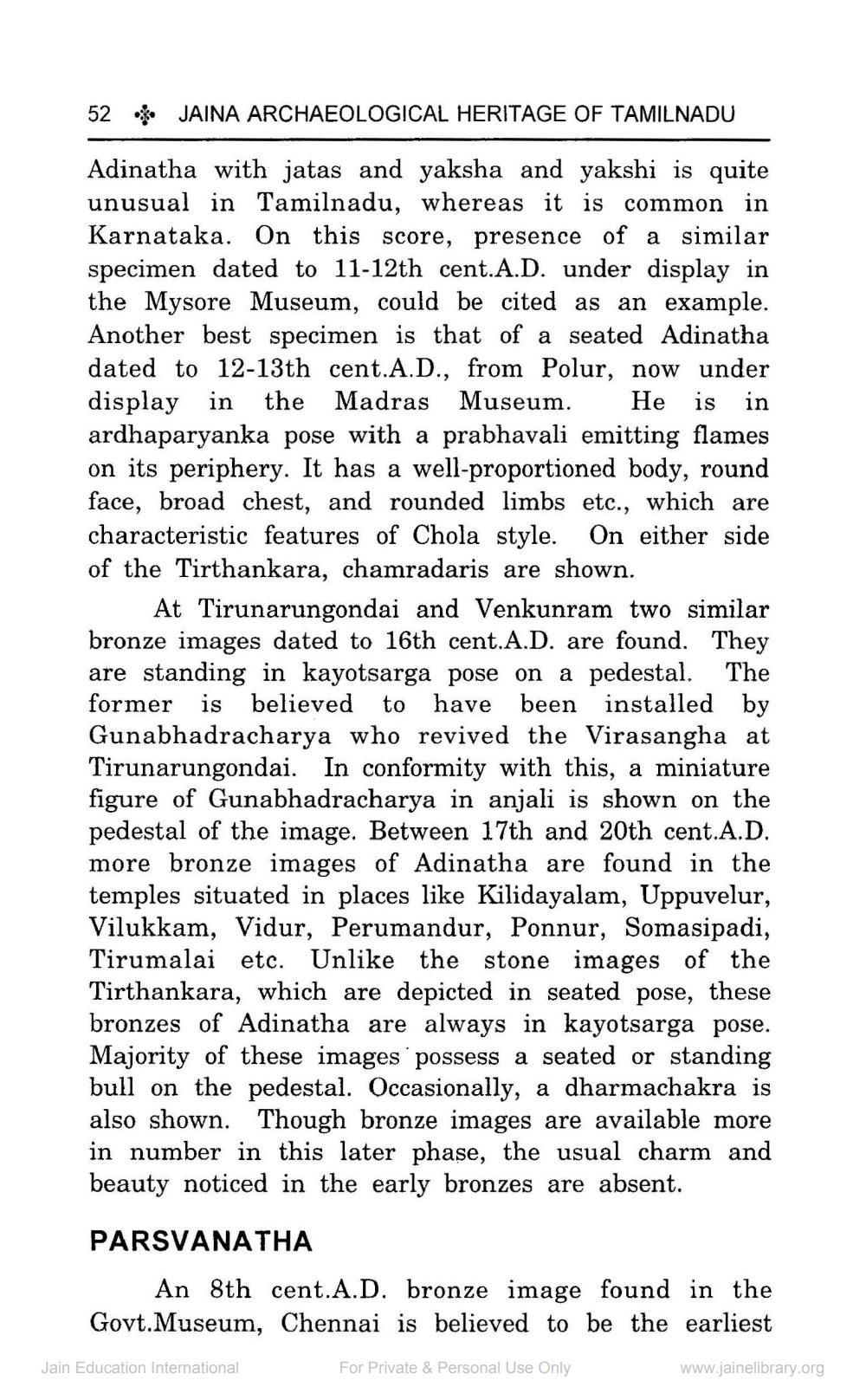________________
52 JAINA ARCHAEOLOGICAL HERITAGE OF TAMILNADU
Adinatha with jatas and yaksha and yakshi is quite unusual in Tamilnadu, whereas it is common in Karnataka. On this score, presence of a similar specimen dated to 11-12th cent.A.D. under display in the Mysore Museum, could be cited as an example. Another best specimen is that of a seated Adinatha dated to 12-13th cent.A.D., from Polur, now under display in the Madras Museum. He is in ardhaparyanka pose with a prabhavali emitting flames on its periphery. It has a well-proportioned body, round face, broad chest, and rounded limbs etc., which are characteristic features of Chola style. On either side of the Tirthankara, chamradaris are shown.
At Tirunarungondai and Venkunram two similar bronze images dated to 16th cent.A.D. are found. They are standing in kayotsarga pose on a pedestal. The former is believed to have been installed by Gunabhadracharya who revived the Virasangha at Tirunarungondai. In conformity with this, a miniature figure of Gunabhadracharya in anjali is shown on the pedestal of the image. Between 17th and 20th cent.A.D. more bronze images of Adinatha are found in the temples situated in places like Kilidayalam, Uppuvelur, Vilukkam, Vidur, Perumandur, Ponnur, Somasipadi, Tirumalai etc. Unlike the stone images of the Tirthankara, which are depicted in seated pose, these bronzes of Adinatha are always in kayotsarga pose. Majority of these images possess a seated or standing bull on the pedestal. Occasionally, a dharmachakra is also shown. Though bronze images are available more in number in this later phase, the usual charm and beauty noticed in the early bronzes are absent.
PARSVANATHA
An 8th cent.A.D. bronze image found in the Govt. Museum, Chennai is believed to be the earliest
For Private & Personal Use Only
Jain Education International
www.jainelibrary.org




